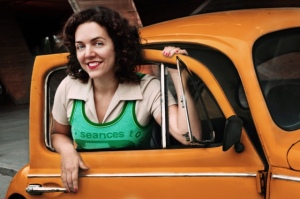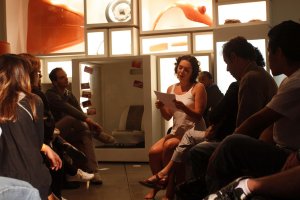The Owner of the Orange Beetle, a performance-installation inside an Orange Volkswagen Beetle.



“A Dona do Fusca Laranja”
1˚ act (50 min): the audience was invited to get inside the car to go around the streets of Rio de Janeiro.
2˚ act (1 hour): jam session conducted by Ricardo Siri and Ricky Seabra, at the same broadcasting Camila live performing inside the car in some parts of the city.
3˚ act (40 min): video installations, video mappings, live music, and Camila performing. Directed by Fabio Ferreira. Playwright: Jô Bilac and Camila Rhodi.
It was integrated with other medias, but still with a director. On this piece I was talking about losses. Based on the jacking of my orange beetle, on this performance I took people on different points of the city to tell them about existential facts of a life, the pain and the beauty of it.
Rio de Janeiro 2010.
